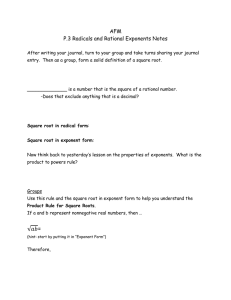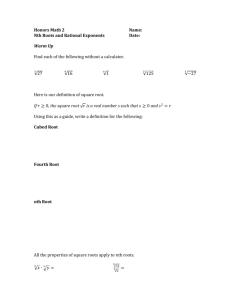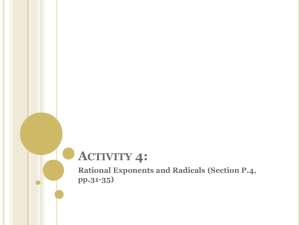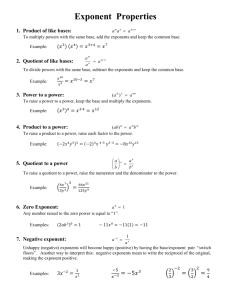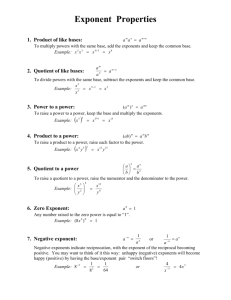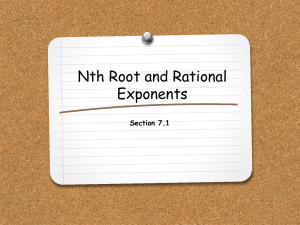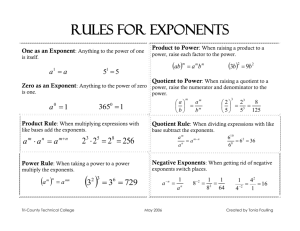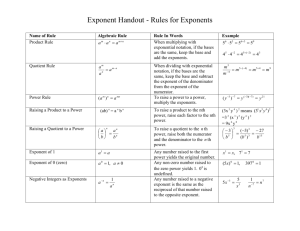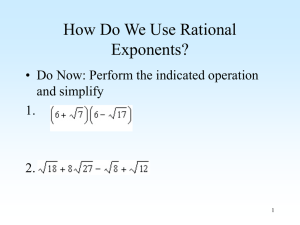2 Radical and Rational Exponents
advertisement
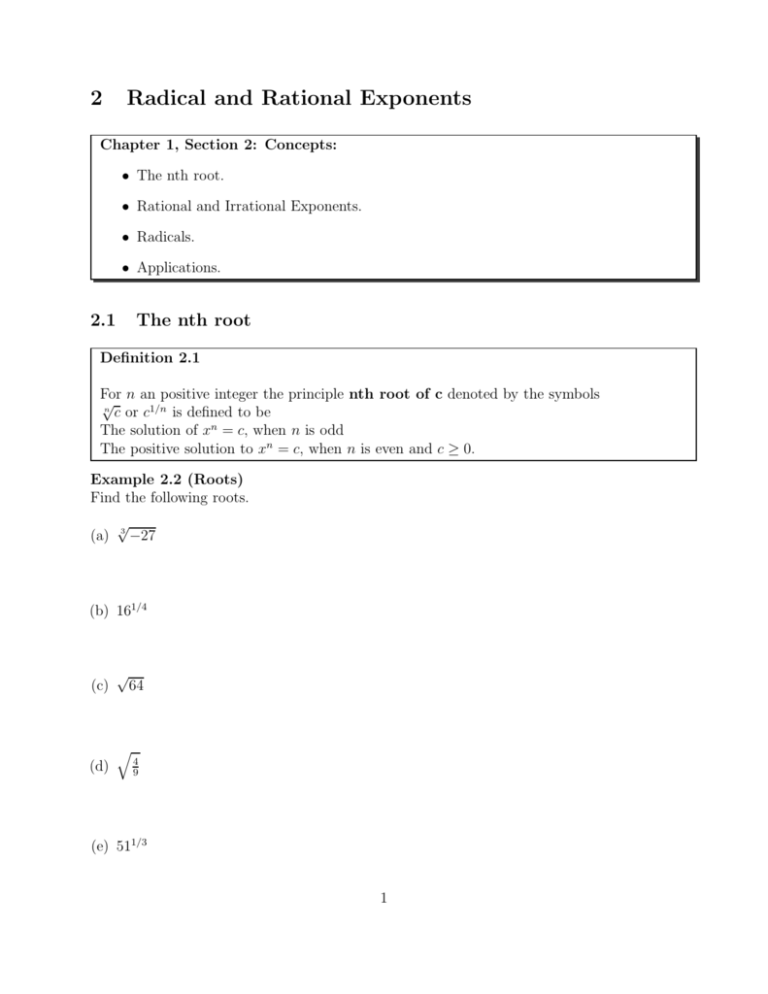
2 Radical and Rational Exponents Chapter 1, Section 2: Concepts: • The nth root. • Rational and Irrational Exponents. • Radicals. • Applications. 2.1 The nth root Definition 2.1 For n an positive integer the principle nth root of c denoted by the symbols √ n c or c1/n is defined to be The solution of xn = c, when n is odd The positive solution to xn = c, when n is even and c ≥ 0. Example 2.2 (Roots) Find the following roots. (a) √ 3 −27 (b) 161/4 (c) (d) √ 64 q 4 9 (e) 511/3 1 2.2 Rational Exponents The previous section defined what we mean by an exponent of the for n1 . In this section we can take this idea a step further to exponents of the form m where m is an integer. In other n words when the exponent is a rational number. This leads to the following definition. Definition 2.3 Let c be a positive real number and let kt be a rational number in lowest terms with a positive denominator. Then, t 1 1 c k is defined to be the number (ct ) k = (c k )t Example 2.4 (Rational Exponents) Evaluate each expression exactly. (a) (27)2/3 (b) 16−3/4 (c) (−8)2/3 (Careful! Calculator may give wrong answer.) Property 2.5 (Exponent Laws) r c r (cr )s = crs , (cd)r = cr dr , = dcr , c−r = c1r d √ √ √ Note that unless c and d are zero, c + d 6= c + d. Note the not equal sign! cr cs cr cs = cr+s , = cr−s , Example 2.6 Simplify each expression. (a) √ 12 − √ 75 √ √ 3 ab ab4 (b) √ √ a( 3 b)4 2 (c) (x1/2 + y 1/2 )(x1/2 − y 1/2 ) Example 2.7 (Rationalizing the numerator.) Write the expression with no radicals in the numerator. √ 1+ 6 3 The next problem is an example of what’s called the difference quotient. The difference quotient is used in calculus to define the derivative. For now, we will just simplify the expression. Example 2.8 (Difference Quotient) Rationalize the numerator of the expression √ √ x+h− x . h 2.3 Applications Example 2.9 The gravitational force (F) between our Earth and our Moon depends directly on the product of their masses and inversely on the Earth-Moon distance. Calculate F in Newtons where F = (6.67 ∗ 10−11 )(5.98 ∗ 1024 )(7.36 ∗ 1022 ) (3.84 ∗ 108)2 Example 2.10 Find the Bohr radius for the hydrogen atom in meters. s 9 ∗ 109 (1.602 ∗ 10−19 )2 R= 8.19 ∗ 10−8 Example 2.11 A mitochondria (membranous organelles) is shaped like an ultra small sausage of length 3 15,000 angstroms from one end to the other end and has a thickness of 5,000 angstroms. There are 1,000 mitochondrias in a single liver cell of the rat. How long is the liver cell and how wide is it in angstroms? Example 2.12 For the problem above give your answer in inches if 1 angstrom is about 1/250,000,000 inch. 4
